"If we gaze in wonder on the personal influence of Charles the Great in reforming handwriting, we shall be still more struck by the spectacle presented to us by Ireland in the sixth, seventh and eighth centuries. It is the great marvel in the history of writing. Modern historians have at last appreciated the blaze of life, religions, literary, and artistic, which was kindled in the 'Isle of Saints' within a century after St. Patrick's coming (about A. D. 450); how the enthusiasm kindled by Christianity in the Celtic nature so far transcended the limits of the island, and indeed of Great Britain, that Irish missionaries and monks were soon found in the chief religious centres of Gaul, Germany, Switzerland, and North Italy, while foreigners found their toilsome way to Ireland to learn Greek! But less prominence has been given to the artistic side of this great reflex movement from West to East than to the other two. The ****** facts attest that in the seventh century, when our earliest existing Irish MSS. were written, we find not only a style of writing (or indeed two) distinctive, national, and of a high type of excellence, but also a school of illumination which, in the combined lines of mechanical accuracy and intricacy, of fertile invention of form and figure and of striking arrangements of colour, has never been surpassed. And this is in the seventh century--the nadir of the rest of Europe!
"It is certain that Alcuin was trained in Hiberno-Saxon calligraphy, so that we may be surprised to find that the writing which, under Charles the Great, he developed at Tours, bears hardly a trace of the style to which he was accustomed. En revanche, in the ornamentation and illumination of the great Carolingian volumes which have come down to our times, we find those constant, persistent traces of English and Irish work which we seek for in vain in the plainer writing.
"This minuscule superseded all others almost throughout the empire of Charles the Great, and during the ninth, tenth, and eleventh centuries underwent very little modification. Even in the two next centuries, though it is subject to general modification, national differences are hardly observable, and we can only distinguish two large divisions, the group of Northern Europe (England, North France, Italy, and Spain). The two exceptions are, that Germany, both in writing and painting, has always stood apart, and lags behind the other nations of Western Europe in its development, and that England retains her Hiberno-Saxon hand till after the Conquest of 1066. It may be noted that the twelfth century produced the finest writing ever known--a large, free and flowing form of the minuscule of Tours. In the next century comes in the angular Gothic hand, the difference between which and the twelfth century hand may be fairly understood by a comparison of ordinary German and Roman type. In the thirteenth, fourteenth, and fifteenth centuries the writing of each century may be discerned, while the general tendency is towards complication, use of abbreviations and contractions, and development of unessential parasitic forms of letters.
"The Book of Kells, the chief treasure of Trinity College, Dublin, is so-called from having been long preserved at the Monastery of Kells, founded by Columba himself. Stolen from thence, it eventually passed into Archbishop Ussher's hands, and, with other parts of his library, to Dublin. The volume contains the Four Gospels in Latin, ornamented with extraordinary *******, elaboration, and beauty. Written apparently in the seventh century, it exhibits, both in form and colour, all the signs of the full development and maturity of the Irish style, and must of necessity have been preceded by several generations of artistic workers, who founded and improved this particular school of art. The following words of Professor Westwood, who first drew attention to the peculiar excellences of this volume, will justify tile terms made use of above: 'This copy of the Gospels, traditionally asserted to have belonged to Columba, is unquestionably the most elaborately executed MS. of early art now in existence, far excelling, in the gigantic size of the letters in the frontispieces of the Gospel, the excessive minuteness of the ornamental details, the number of its decorations, the fineness of the writing, and the endless variety of initial capital letters with which every page is ornamented, the famous Gospels of Lindisfarne in the Cottonian Library. But this MS. is still more valuable on account of the various pictorial representations of different scenes in the life of our Saviour, delineated in a style totally unlike that of every other school.' "















